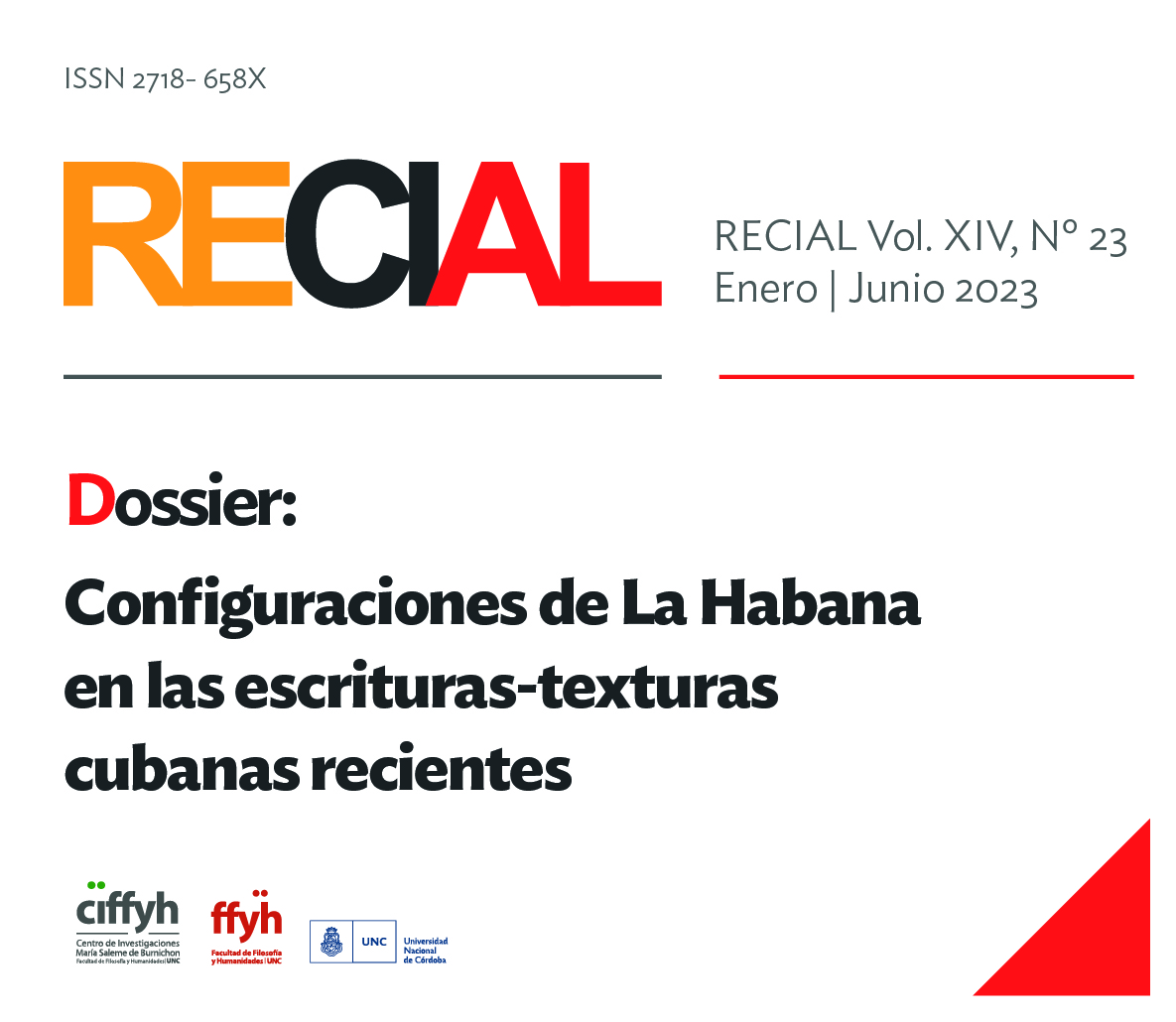Texturas
Tres palabras como decir Apaga - la – candela/ La Habana era emo y ahora tiene un diente de oro/ Murales y Regalos en La Habana/ ¿Cómo habitamos un gesto en La Habana?/ Di positivo al asombro (memorias desde la fiebre)/ La Habana que habito
DOI:
https://doi.org/10.53971/2718.658x.v14.n23.41713Keywords:
atlases, texture, assemblies, materialities, mountingAbstract
In this selection, we bring together different productions that speak of Havana with a singular grammar, an atlas-texture that integrates images, knowledge, and languages. From photography, documentaries, music, cinema, performance or theater, we organize a montage of images that will collaborate to the task of unarchiving and reinventing a city. Therefore, we envision not only a space to talk "about" literature, but also an archive of multiple materialities. Within them, readers will discover a collection of six artistic materials - carefully chosen for this exhibition - that go beyond the generic boundaries of poetry (Nara Mansur), narrative (Martha Luisa Hernández), plastic arts and muralism (Yulier P), photography (Kaloian Santos), scenic performance, theater, or the preservation of demolished buildings (Habitar el gesto and Documental urbano de la fiebre) transforming into methods of intervening, emptying, and renaming Havana. The combination of these materials calls for a reconnection with the heterogeneous, complex, and sinuous materiality of the city, enabling exploration through the solidified layers of the visual archive to question how the city becomes a body and bodies interact - walking, discarding, piercing, inscribing. In this way, the textures shape the city's assembly, a craftsmanship that is both unique and communal, that is (eliminar) not exclusively based on human form-factor, but rather executed in a heterogeneous way (non-anthropocentric) utilizing the actions, sounds and knowledge of the sea, wind, trees, burials, and manufactured columns.
References
Sin citas.
Downloads
Published
Issue
Section
License

This work is licensed under a Creative Commons Attribution-NonCommercial-ShareAlike 4.0 International License.
Aquellos/as autores/as que tengan publicaciones en esta revista, aceptan los términos siguientes:
- Los/as autores/as conservarán sus derechos de autor y garantizarán a la revista el derecho de primera publicación de su obra, el cuál estará simultáneamente sujeto a la Licencia de reconocimiento de Creative Commons que permite a terceros compartir la obra siempre que se indique su autor y su primera publicación esta revista.
- Los/as autores/as podrán adoptar otros acuerdos de licencia no exclusiva de distribución de la versión de la obra publicada (p. ej.: depositarla en un archivo telemático institucional o publicarla en un volumen monográfico) siempre que se indique la publicación inicial en esta revista.
- Se permite y recomienda a los/as autores/as difundir su obra a través de Internet (p. ej.: en archivos telemáticos institucionales o en su página web), luego de su publicación en la revista. (Véase El efecto del acceso abierto).





